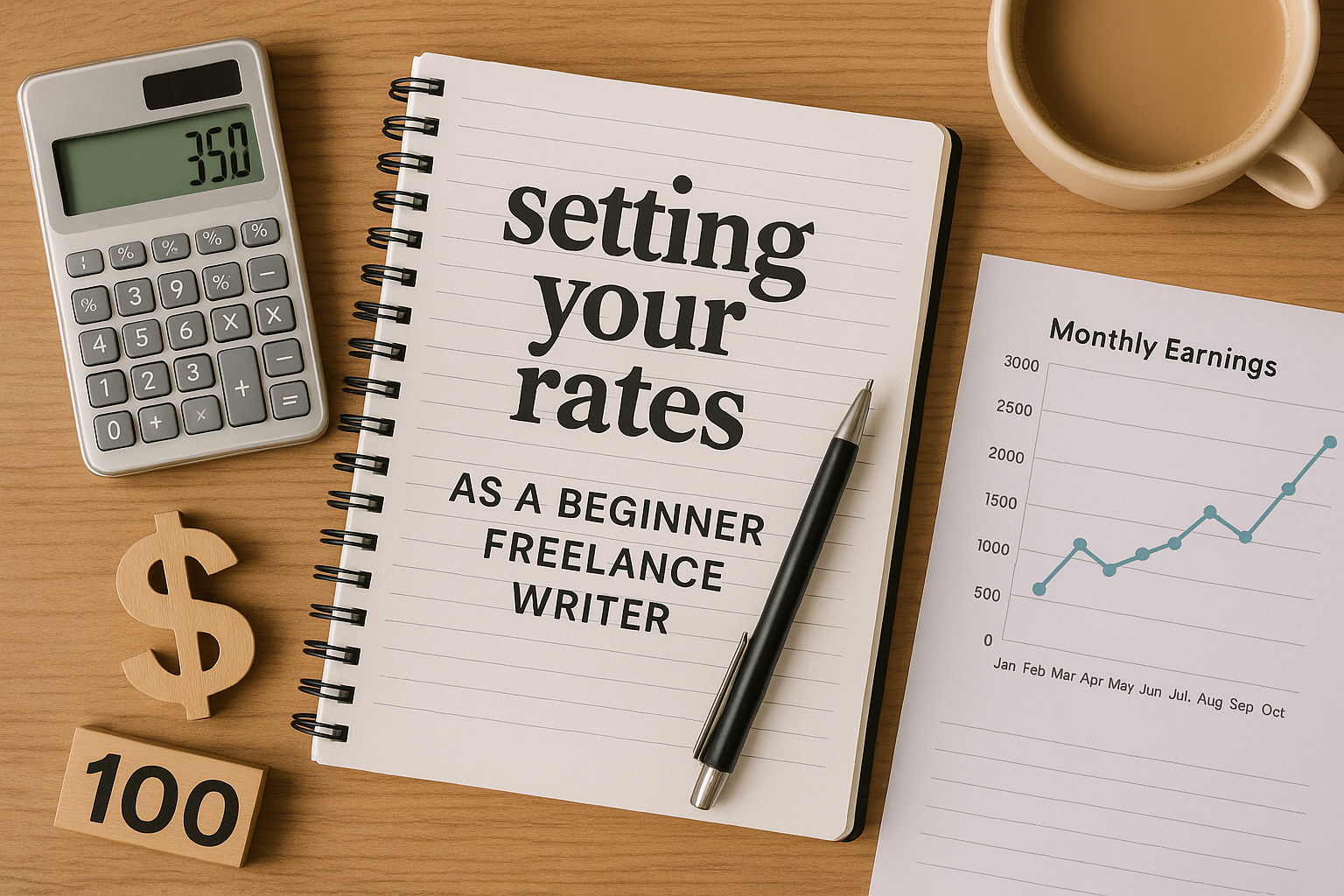One of the most confusing — and intimidating — parts of starting a freelance writing career is setting your rates. You might wonder: “What should I charge? Will clients think I’m too expensive? What if I undercharge and regret it later?”
Don’t worry — these are common questions for every beginner. This article will guide you through how to confidently set your freelance writing rates, balance value with fair pay, and position yourself professionally in the market.
Why Your Rate Matters
Your rate reflects more than just your writing — it also communicates:
- Your level of professionalism
- Your confidence in your work
- The value you place on your time
Setting your rates too low can lead to burnout and make clients undervalue your services. On the other hand, setting them too high (without justification) may scare off potential clients.
Step 1: Understand the Common Pricing Models
There are four main ways to charge for freelance writing:
1. Per Word
This is common in article, blog, and web content writing.
Examples:
- $0.03/word for beginners
- $0.10–$0.25/word as you gain experience
Great for transparency and easy calculation, but doesn’t always reflect project complexity.
2. Per Hour
Ideal for ongoing work or tasks with unclear scope.
Typical beginner rates: $15–$35/hour
Be sure to track time honestly and clearly explain expected hours upfront.
3. Per Project
You quote a flat rate based on the project’s scope, not the time or word count.
Example:
$150 for a 1,000-word blog post with keyword research and 2 revisions.
This model rewards efficiency and is easier for clients to budget.
4. Retainer
A monthly fixed fee for a set number of articles or hours.
Great for recurring income and long-term relationships.
Example: 4 blog posts/month for $600
Step 2: Consider Your Expenses and Income Goals
You’re not just charging for writing — you’re running a business.
Factors to consider:
- Time spent researching, writing, editing
- Tools and subscriptions (Grammarly, Canva, hosting, etc.)
- Taxes and business expenses
- Sick days and vacation time
Example calculation:
Let’s say you want to earn $2,500/month.
If you can handle 25 articles per month, you’ll need to charge at least $100/article to hit that goal.
Step 3: Start Low — But Not Too Low
Many beginners start with rates between $0.03 and $0.06 per word, or $30–$60 per blog post. This is acceptable while you build a portfolio, but it shouldn’t be your long-term pricing strategy.
To avoid undercharging:
- Never work for less than $0.01 per word
- Avoid “content mills” unless you’re truly just practicing
- Ask for client testimonials in exchange for low rates
Step 4: Adjust Based on Niche and Complexity
Some niches pay more due to demand, expertise, or the stakes involved.
Higher-paying niches:
- Finance
- SaaS and tech
- Healthcare
- B2B marketing
- Legal writing
Lower-paying (but still valuable) niches:
- Lifestyle
- Parenting
- Travel
- Self-help
Also, writing a detailed case study or whitepaper requires more research and expertise than a simple blog post — so charge accordingly.
Step 5: Be Transparent in Your Proposals
When responding to a job posting or pitch, include clear pricing with what’s included:
Example:
I charge $75 per 1,000-word article. This includes one round of revisions and basic keyword optimization.
This shows professionalism and sets boundaries early.
Step 6: Know When (and How) to Raise Your Rates
As your portfolio grows and your skills improve, don’t be afraid to raise your prices. Clients often expect this — and the right clients will respect it.
When to raise your rates:
- You’re consistently booked out
- You’re getting positive client feedback
- You’re getting better results (e.g., traffic, conversions)
- You’ve added new skills (e.g., SEO, content strategy)
How to do it:
- Notify existing clients with advance notice (e.g., 30 days)
- Keep it professional: “Due to increased demand, my new rate will be $X starting [date]. I’d love to continue working together!”
Step 7: Experiment and Evaluate
Finding your ideal rate takes time. You’ll need to test, reflect, and adjust.
Ask yourself:
- Am I being paid fairly for my time?
- Do I feel resentful or energized by this project?
- How does this client value my work?
If the numbers don’t make sense — financially or emotionally — adjust them.
What to Avoid
- Comparing yourself too much: Other writers have different expenses, goals, and markets.
- Working for exposure: It rarely pays off.
- Pricing based on word count alone: Consider effort, research, and strategy.
- Ignoring scope creep: Always clarify project limits and add fees for extras.
Your Worth Is Not Just a Number
Your writing helps businesses grow. It educates audiences, builds trust, and drives revenue. Don’t undervalue that.
Start where you are — but set your eyes on where you want to go. With consistency, confidence, and clarity, you’ll grow into the rates you deserve.

6egls8